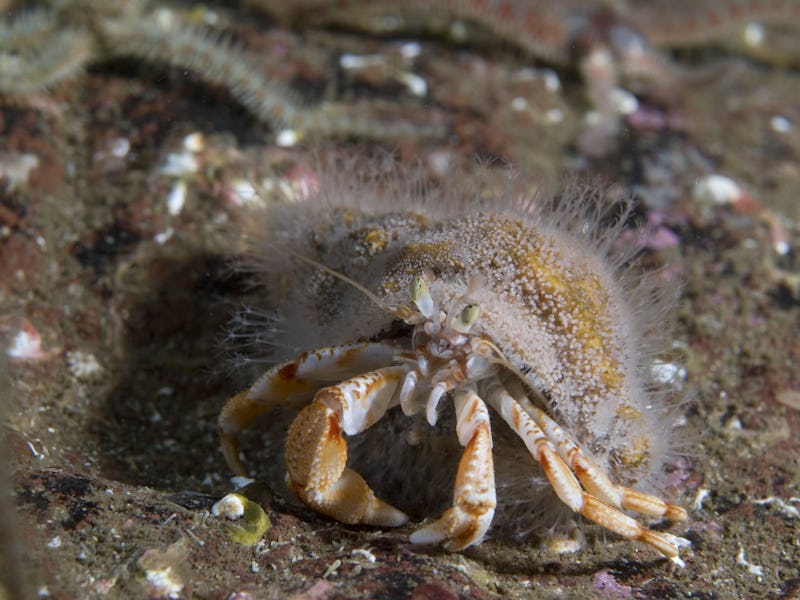Is The Fountain of Youth Under The Sea? This Sea Creature Might Be The Key
Cut off the mouth, and the body regrows.

Humans suck at regeneration. Sure, our livers can regrow, and cuts mend themselves, but those abilities are small fries compared to animals like salamanders and seastars that can sprout new appendages effortlessly. Finding out the secrets to regeneration and its evolutionary roots could help us solve the dilemma of aging, of repairing and, potentially, preventing that inevitable wear and tear.
In a study published Friday in the journal Cell Reports, scientists at the National University of Ireland and the National Human Genome Research Institute (NHGRI) at the National Institutes of Health may have uncovered some of those secrets, at least in the aquatic Hydractinia symbiolongicarpus. When it needs to regenerate any part or its whole body, this small tube-like marine creature — which looks like a cross between a worm and a sea anemone and grows on hermit crab shells — uses worn-out, aged (or senescent) cells to activate surrounding, healthy cells to transform into stem cells that replace the missing pieces.
Hydractinia's regeneration-driving stem cells are stored in the lower trunk of the animal's body, far from the mouth.
In humans, senescence — the natural biological process where cells age, losing their ability to grow and divide — is considered detrimental. When they accumulate and don’t die, senescent cells tend to spew a cocktail of inflammatory chemicals that have been linked to many age-related diseases like Alzheimer’s disease, arthritis, and even cancer.
But in Hydractinia, the researchers discovered senescent cells are strangely a force of regenerative good. The researchers knew from prior studies that this sea creature stores the bulk of its stem cells — which are responsible for regeneration — in its trunk. In the study, they amputated the animal's mouth, which is far away from its trunk, to see what would happen. It turns out the Hydractinia was still able to regenerate a brand-new body. And unlike us, Hydractinia is able to get rid of senescent cells when it’s done with them via ejection straight out of the mouth.
Examining the genomes of the cells near the amputation for clues, the researchers found three promising genes related to senescence. One of which, called Cdki1, was flipped on and appeared to be mainly driving regeneration. When this gene was deleted, Hydractinia couldn’t make any senescent cells, which in turn blocked reprogramming regular, healthy cells into new stem cells and thus no brand spanky new body.
Since humans, Hydractinia, and Hydractinia’s close relatives, like jellyfish, last shared an ancestor over 600 million years ago, it’s possible that senescence may be an ancient mechanism that instructs cells near an injury to prepare for regeneration. Other consequences of senescence, such as aging and chronic inflammation, may have evolved later as a result of complex animals needing their cells to remain stable to prevent them from unfettered, uncontrolled regeneration like with cancer.
“We still don’t understand how senescent cells trigger regeneration or how widespread this process is in the animal kingdom,” Andy Baxevanis, co-author of the study and senior scientist at NHGRI, said in a press release. “Fortunately, by studying some of our most distant animal relatives, we can start to unravel some of the secrets of regeneration and aging — secrets that may ultimately advance the field of regenerative medicine and the study of age-related diseases as well.”